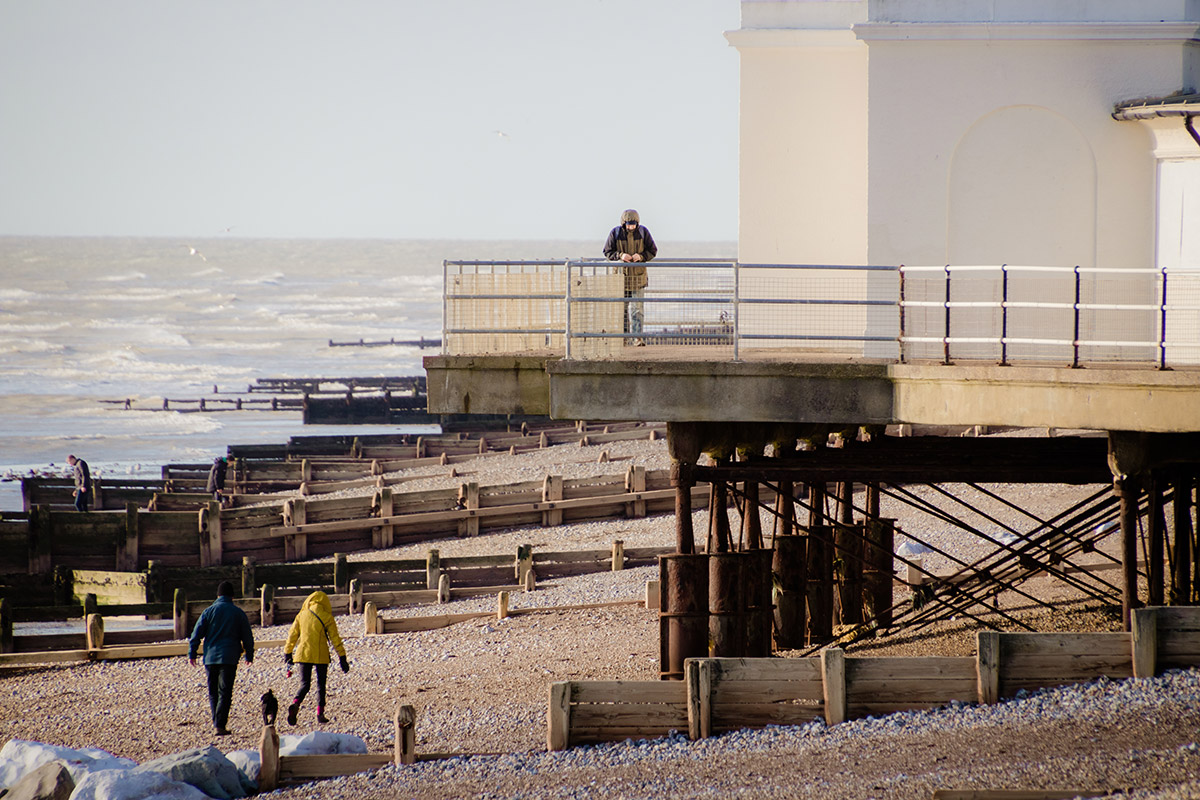Tamron 18-400 f3.5 to f6.3 Di VC Lens Field Review
In a previous blog post I talked about the benefits and cavets of super zoom lenses. Many of us would be delighted to own a wide to tele super zoom which covers a long focal range (most likely up to 300 mm) which is sharp, lightweight, has fast and accurate autofocus at all focal lengths, little in the way of chromatic aberration, and is affordable. In reality however it's pretty far-fetched to get all of those things, unless we forego the wide end of the spectrum and opt for a professional telezoom instead – or unless we opt for a much shorter focal range overall.
The recently released Tamron 18-400 f2.5-6.3 VC super zoom lens has received quite a favourable response so far from several reviewers, but in-depth reviews remain scarce. However before we even consider the merits of this superzoom we need to firmly ground our expectations. The most common compromises with super zoom lenses lie with sharpness, particularly towards the long end of the zoom range. Superzoom lenses are also known for chromatic aberration (commonly seen as purple fringing), soft corners and edges, and slow or inaccurate autofocus particularly towards the telephoto end.
Setting our Expectations when Assessing Superzoom Lenses
Broadly speaking reviews are divided into professional reviews and user reviews. There is often a discrepancy between the two simply because the average user of a super zoom is likely to be a hobbyist photographer who lacks the knowledge and experience to correctly assess lens performance. I've seen many glowing amateur reviews for optics which are in reality quite poor. Very often it's the enjoyment the user gains from the lens which will determine their judgement. Professional photographers on the other hand will have used a very wide range of equipment over the years and will have a number of reference points at their disposal. Professionals are also less likely to feel emotionally attached to their images or their equipment.
There really is no substitute for getting a piece of equipment into your own hands and seeing if it’s suitable for your own purposes. If you mostly publish your images on social media or a blog, and if you rarely print above 12 inches, then it's amazing what you can get away with. On the other hand someone who enjoys making large prints will certainly see the weaknesses of their optics. I fall into the latter category - a lot of the images I’ve gathered on personal outings end up representing me at competition level or distinction level. This means the image is subject to a high level of scrutiny in both digital and print form, and I’d be wasting my time if I used poor lenses. So why am I even considering the Tamron 18-400? Well, I wanted to see if this lens would be a good pairing with my recently acquired ‘family and friends camera’ the Canon 200D. The lens would create a convenient option for a companion if we go out shooting together.
Superzoom Lens Weaknesses
I’ve owned a couple of superzooms in the past which have met my expectations, at least in most conditions. Those lenses include the excellent Panasonic 14-140ii (a Micro 4/3 lens offering an effective field of view of 28 to 240 mm) and the Sony APS-C SEL 18-200 (the original silver one) which is immensely sharp throughout the zoom range. Neither of these lenses are without weaknesses though. The Panasonic suffers from a small degree of purple fringing at the long end, and the Sony suffers from slow autofocus as the light falls.
Consumer oriented lenses are keenly priced for a reason. Not only do they have an inexpensive build quality they’ve also been subject to less attention on the production line when it comes to calibration. For this reason we’ll often see a phenomena known as ‘copy variance’. If you were to test two or three lenses of the same model it’s possible you would see some differences in sharpness and/or centering. Unless the person reviewing the lens has the opportunity to test more than one copy it can be hard to know if their copy is representative of the one you’ll receive. I should also point out that the resolving power of the sensor in whichever camera you use will also have an influence. My Tamron 18-400 tests were carried out using the new APS-C Canon 200d, with Canon’s latest 24MP sensor.
Most super zoom lenses respond favourably to stopping down somewhat, but whether or not you have that option in the field will depend on where you live and what you photograph. Here in the UK we can have virtually no usable light during the winter and stopping down won’t be an option much of the time. So for me, I’ll be more concerned about how the lens functions at its maximum aperture.
Field Testing the Tamron 18-400 f3.5 to f6.3 Lens
As far as testing the Tamron 18-400 went, things didn't get off to a good start - the copy I purchased on eBay had an extremely sticky zoom ring at around 200mm. This immediately aggravated my wrist and it was promptly returned. I assumed I had received a faulty unit and was happy to get the same lens (this time on loan) shortly afterwards. It had the same problem with the sticky zoom and it seems this is a common feature of the lens. But otherwise, build quality is good.
I took the lens out to one of my usual field testing locations and put it through its paces. This means working through the focal range using a spectrum of static subjects. It also gives me a chance to determine my threshold for handholding (which is highly individual). At focal lengths of over 200 mm I found that I needed at least 1/300 second despite the VC. I also observed that I always achieved focus confirmation, and by force of habit when field testing I always take three frames of the same image. With the Tamron 18-400 quite often some of the pictures would be soft and some would be much sharper. I have to conclude that the autofocus is a little flaky, even when offering up a fairly contrasty target. I don't think that’s down to the camera because I’ve used the 200D fairly consistently in the last few weeks with reliable autofocus from my other lenses.
Another thing I observed is that chromatic aberration becomes very noticeable across at least 20% of the frame on each side as the focal length increases over around 100mm. At times it’s evident around some objects across the centre of the frame as well, but this is not a surprise given the design of the lens. I worked at the aperture values which represent my travel shooting habits when using APS-C, which are f6.3 and f8. Going tighter than that here in the UK can be a problem because we rarely have much light (if any usable light) during winter time. I found that stopping down to f8 or f11 made only a relatively small difference to sharpness. It was possible to get images of acceptable sharpness at 360mm but I found this was very much dependent on stability and getting a fairly high shutter speed - in my case not less than 1/400.
On several occasions the camera would not trip the shutter once focus had been achieved. Reframing and refocusing was the only answer when this happened.
It can be impossible to accurately assess image quality using low resolution website photographs. For that reason I've included some 100% crops from the focus area. The photographs were processed exactly as I normally would in Adobe Lightroom, with a subtle curve bump to add a little contrast, and my usual sharpening of Amount 36 and Radius 0.6. I will say that chromatic aberration/purple fringing is not necessarily a deal-breaker and can usually be sorted out successfully during postproduction – but it was evident.
When testing lenses be aware of your depth of field, and ensure you’re in absolute control of your focus point (because that’s the area you’ll be examining for sharpness).
Not unsurprisingly, I observed a degree of decentring (with the left-hand side of the frame softer than the right). De-centering is not uncommon with zoom lenses and is something you should always check for as soon as you receive a new lens. The lens is sharp wide open and remains acceptable in the centre to around 130mm. Thereafter the vagaries of its autofocus can influence results, no matter how carefully you focus. Bench testing can answer those questions, but can be of little practical value since it doesn’t reflect how we use lenses in the field.
During postproduction I did need to add a little more saturation, contrast and sharpening to the RAW files than I normally would. I found the edges at all focal lengths and aperture values to be smeary, aside from wide angle which was acceptable. At the long end the softness extended in by about a quarter of the frame on each side, which is a lot. In all cases if I were making a print I would need to crop fairly substantially from each side due to the softness, so I would need to remember to frame slightly wider than normal to allow for this.
1/800 f5.6 60mm
Central Crop
1/640 f8 89mm
Central Crop
1/1250 f6.3 400mm
Central Crop
Bottom Left
1/640 f6.3 22mm
Central Crop
1/640 f6.3 77mm
1/640 f6.3 265mm
Central Crop
1/400 f8 339mm
Central Crop
Tamron 18-400 Conclusion and Summary
Is this a lens I would incorporate into my recreational kitbag? I would have to say no, for me at least there are too many compromises, but that was not entirely unexpected. It simply isn’t sharp enough for my needs. The lens is a better performer than its predecessor the Tamron 16-300, which I would rate as poor (notwithstanding the possibility I tried a bad copy). However I think this lens would be ideal for someone who enjoys travel photography and who doesn't make large prints - I think that’s the market this lens is intended for.
Remember this is simply my assessment, and my criteria and needs may be very different to yours. The lens has plenty of good things going for it - it's quite small and at 710 grams is light for what it offers. The build quality is good as well, and it comes with (at least here in the UK) Tamron’s 5 year guarantee. In many ways it's a no-brainer for recreational photographers but I'm not convinced that more advanced users will be tempted. If you currently shoot with lenses such as the Tamron 16-300 or 18-270, and if you're generally happy with them, then you should find the 18-400 a useful upgrade.
Pros:
compact for the focal range it covers
good build quality
covers a massive focal range and offers unrivalled convenience
comes with a lens hood and (depending on your part of the world and assuming you by your lens from a registered dealer) Tamron’s 5 year warranty
sharp in the wide range
fast autofocus throughout the range
lack of zoom creep
Cons:
softens somewhat in the telephoto range
obvious edge softness in the telephoto range which worsens as you zoom
chromatic aberration increases as you zoom and is most obvious in the corners and edges, but becomes evident in the centre of the frame as well
contrast and colour declines towards the long end
stiff zoom operation partway through the range
autofocus can be inconsistent
Overall score: 3/5














